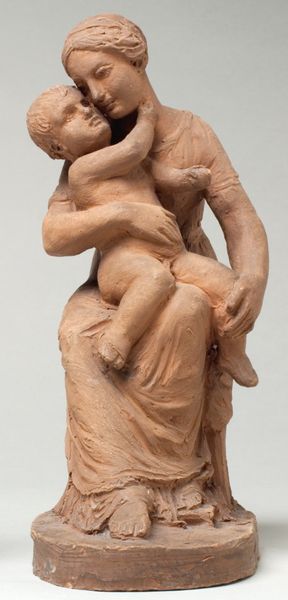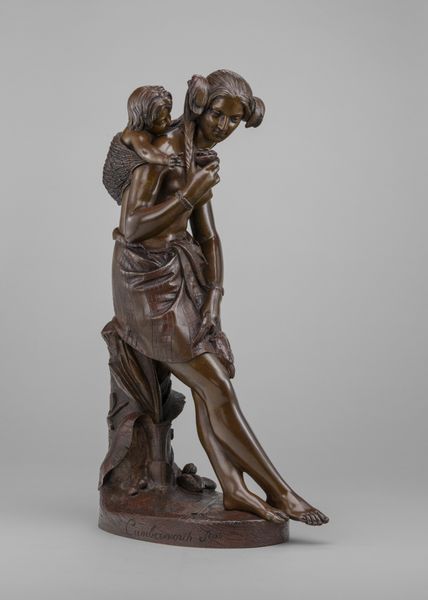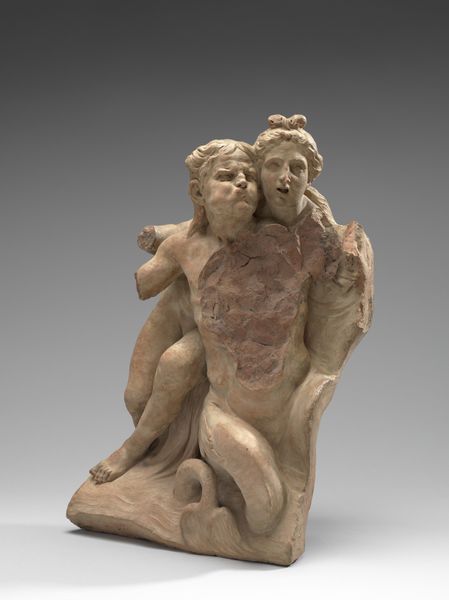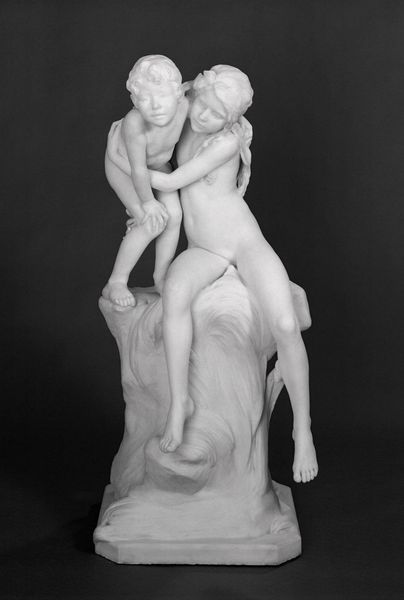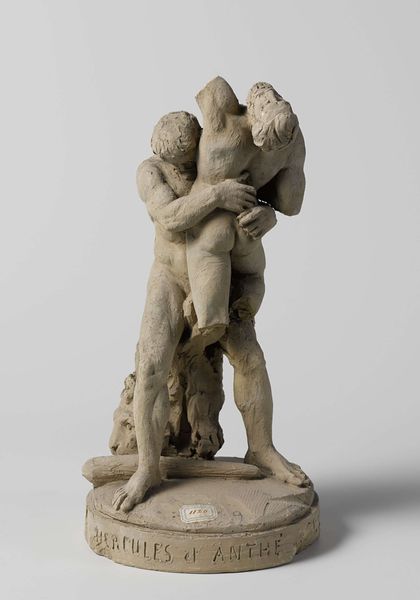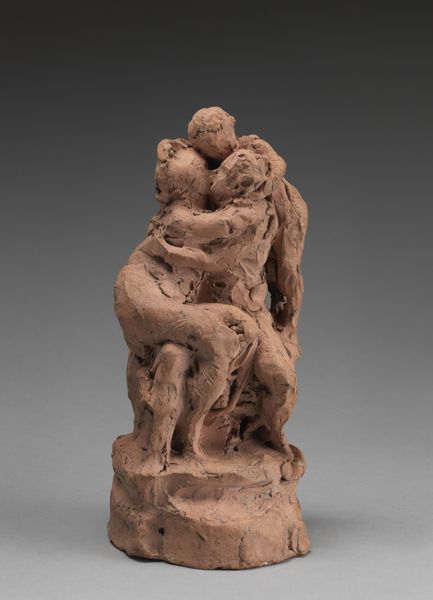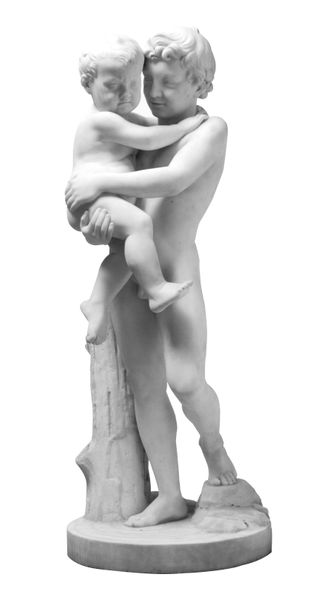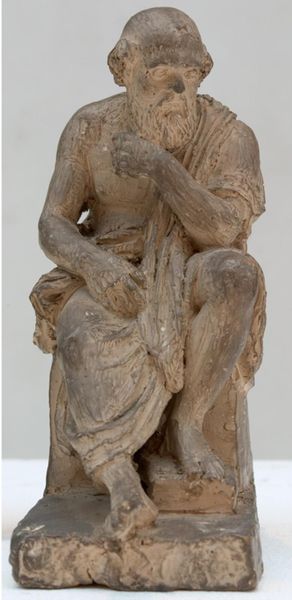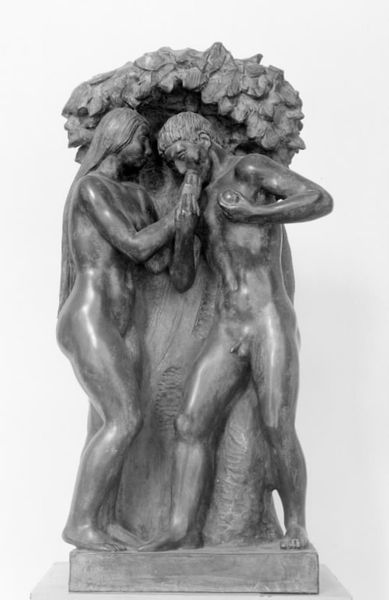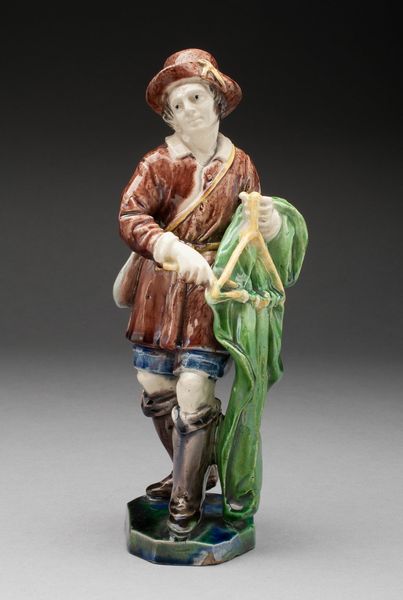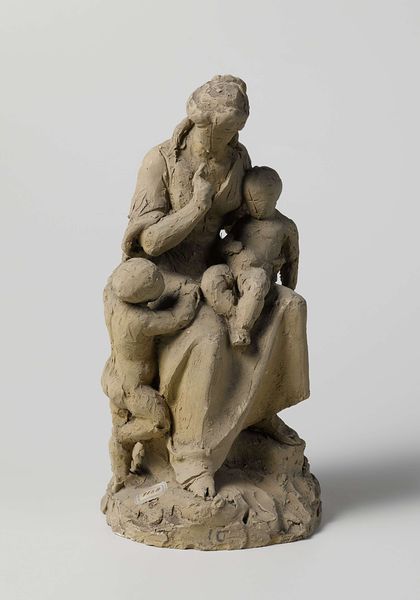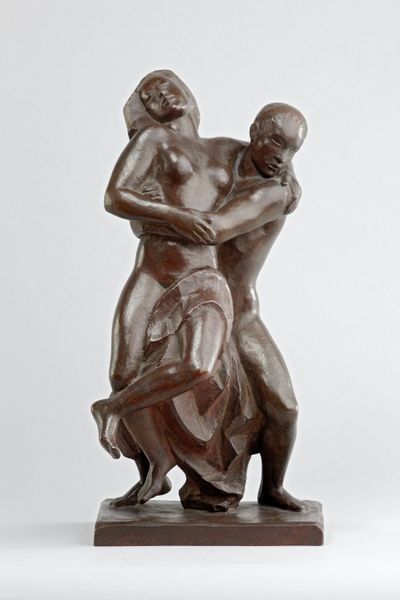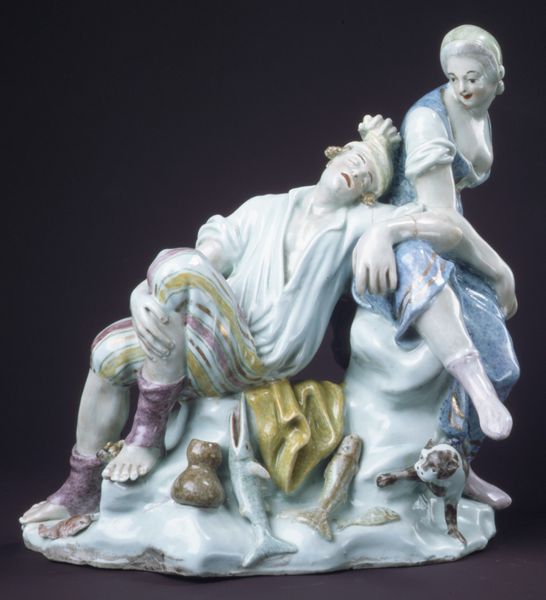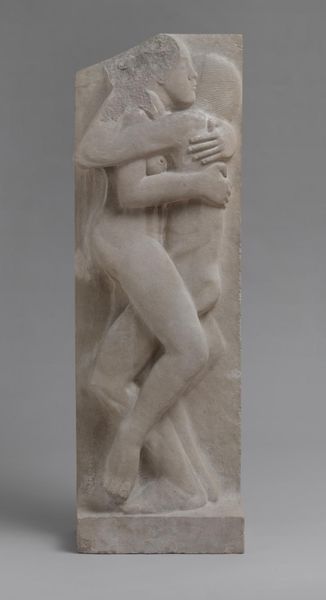
Beeldhouwwerk van roze terracotta: jonge vrouw met halfnaakt, schreeuwend kind op de arm en aan haar voeten een hond. Op rond voetstuk. 1874
0:00
0:00
sculpture, terracotta
#
portrait
#
sculpture
#
figuration
#
sculpture
#
terracotta
Dimensions: height 61.0 cm, diameter 19.0 cm
Copyright: Rijks Museum: Open Domain
Editor: This terracotta sculpture, created by Jean-Baptiste Carpeaux in 1874, depicts a woman holding a distressed child with a dog at her feet. It's quite striking, the raw emotion conveyed by both figures. How would you interpret the social narrative present in this piece? Curator: This sculpture compels us to think about the societal roles of women and children during the late 19th century, doesn't it? Carpeaux produced this during the turbulent years of the Third Republic in France. We see this idealization of motherhood challenged; the child isn’t serene, but actively distraught. How might that have resonated with viewers then? Editor: Perhaps it was a more honest portrayal than the idealized versions typically presented? There's a realness in the child's distress that feels…modern. Curator: Exactly! Carpeaux’s focus on realism, both emotionally and physically, directly confronts academic conventions. And let’s consider the material, terracotta. It allowed for a more accessible artwork, making social commentary available beyond the elite. Do you think that influenced its reception? Editor: It must have broadened its impact, making it more accessible for middle-class homes, challenging or reinforcing existing social norms. It's interesting to think about who this "screaming child" was made for, exactly. Curator: Indeed. And consider, the placement of such an emotional scene in domestic spaces, versus public galleries. It shifts the dialogue surrounding family and domesticity from an abstract idea into a daily presence. How does the domestic setting change our view of the artwork? Editor: I hadn’t considered that! Bringing such raw emotion into the home must have sparked very different conversations than seeing it in a museum. It feels like a step toward acknowledging more complex emotional realities in family life. Curator: It's these layers – social context, accessible medium, domestic setting – that give this work such enduring power. I’ve definitely learned more, reframing how sculpture acts within socio-political and institutional environments. Editor: Agreed! Thinking about the artwork's intended audience, materials, and placement in its historical moment provides deeper layers than simply viewing it formally. Thank you.
Comments
No comments
Be the first to comment and join the conversation on the ultimate creative platform.
